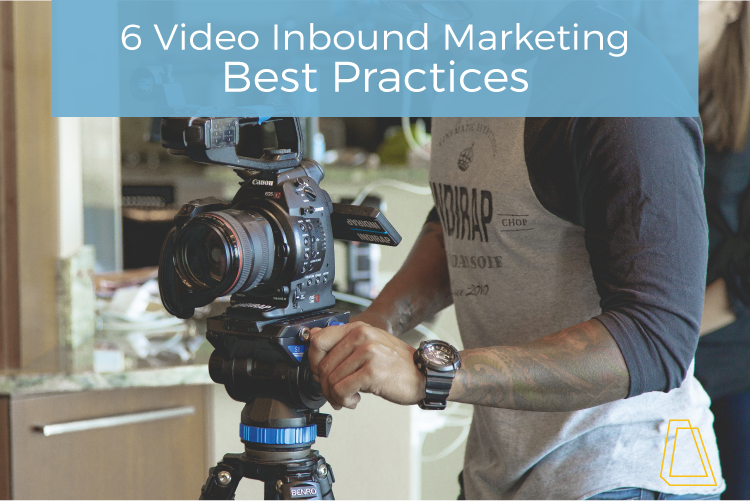6 Video Inbound Marketing Best Practices

Creating a video strategy to market your products or services can be an extremely beneficial step to promoting your business. With the huge increase in video creation and consumption, it’s one of the best methods of conveying messages with social and web platforms. Here are a few inbound marketing best practices to optimize your videos:
1. Add chapters & table of contents.
If you have multiple ideas in a video, give your viewers a breakdown. Try putting a table of contents at the beginning of the video and notate time stamps for the chapters; use chapter headings in order to show the separation of ideas. With this kind of structure in your video, viewers who know what the are looking for have the opportunity to jump to the sections of the video they want to watch.
2. Use video tools to convert leads.
Using a video platform (like Wistia) is a great way to convert leads from your videos. Wistia gives you the ability to add forms in the middle of your video. This is a good way to have viewers sign up for a newsletter, or subscribe to your blog. It’s also easy to simply gather a viewer’s information by gating the video—this means they can’t watch your valuable content until they fill out the form.
Video platforms may also have other tools, like adding calls-to-action or links. Using these tools, you can insert links in your videos to send viewers straight to your website. This is another great way to convert leads if you send viewers to landing pages to download your content.
3. Add visually appealing lighting & graphics.
Taking the time to make sure your video is visually appealing is a must. The quality of the recording, dialogue and use of graphics reflects directly on your company’s services. If the video is unprofessional, the viewer will associate that with the product or service you provide.
4. Use minimal copy with simple transitions.
Don’t let your video distract the viewer from the message. Keep any copy in your videos to a minimum while still getting your point across. Cluttering the video with text switches the viewer’s focus to read only, which detracts from the purpose of the video in the first place. Using clear and well-paced dialogue will get your point across.
When clipping your video together, make the transitions between takes simple. This will be the least distracting, and maintains the focus of the viewer. Videos with transitions that take too long, or are too bold, will pull the viewer’s focus from the content.
5. Keep videos short.
In order to get the most views, you should keep your video under a minute in length. This gives your video a better chance of being viewed all the way through. There are different time windows for different types of videos, based on what their purpose is. Tutorials and explanatory videos can be a little bit longer. Keep in mind though, that trying to put a lot of information in one video likely won’t benefit you. If a viewer doesn’t stick around for the whole video, then any extra content is wasted.
6. Keep it interesting.
Make your video appealing! Create focus by switching up your filming angle and using natural gestures in your video. Being too stiff or frozen while speaking, or maintaining the same camera view, starts to bore the viewer. Use of header overlays, or icon pop-ups that correlate with what you’re saying, increases focus and understanding.
There you have it! Use these video best practices to create effective content and convert leads during the buyer's journey. Do you have any additional video marketing best practices to share? Let me know in the comments below!


